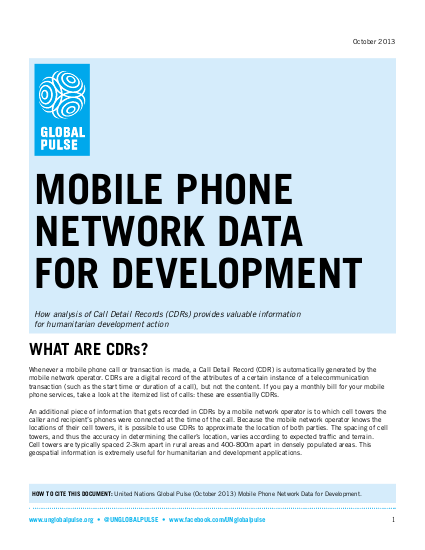
Whenever a mobile phone call or transaction is made, a Call Detail Record (CDR) is automatically generated by the mobile network operator. CDRs are a digital record of the attributes of a certain instance of a telecommunication transaction (such as the start time or duration of a call), but not the content. If you pay a monthly bill for your mobile phone services, take a look at the itemized list of calls: these are essentially CDRs.
An additional piece of information that gets recorded in CDRs by a mobile network operator is to which cell towers the caller and recipient’s phones were connected at the time of the call. Because the mobile network operator knows the locations of their cell towers, it is possible to use CDRs to approximate the location of both parties. The spacing of cell towers, and thus the accuracy in determining the caller’s location, varies according to expected traffic and terrain. Cell towers are typically spaced 2-3km apart in rural areas and 400-800m apart in densely populated areas. This geospatial information is extremely useful for humanitarian and development applications
Resource collections
- Evaluating humanitarian action
- Monitoring and Evaluation (M&E)
- Monitoring of humanitarian action
- UN Habitat - Urban Response Collection
- Urban Response - Urban Crisis Preparedness and Risk Reduction
- Urban Response Collection - Community Engagement and Social Cohesion
- Urban Response Collection - Economic Recovery
- Urban Response Collection - Environment and Climate Change
- Urban Response Collection - Housing, Land and Property
- Urban Response Collection - Urban Crisis Response, Recovery and Reconstruction
- Urban Response Collection - Urban Resilience